Fossils and taxidermy: Memoirs of the Science Museum | Monomad Challenge [ENG-ESP]
A few years ago I worked in one of the most visited places in Caracas, the Science Museum, located in the cultural area par excellence of the city, Bellas Artes. There I not only had the opportunity to practice my profession as a social communicator formally for the first time, but I also learned a lot about science.
Hace algunos años trabajé en uno de los lugares más visitados de Caracas, el Museo de Ciencias, ubicado en la zona cultural por excelencia de la ciudad, Bellas Artes. Allí no solamente tuve la oportunidad de ejercer por primera vez mi profesión de comunicadora social formalmente, sino que también aprendí mucho sobre ciencia y cómo se trabaja en este tipo de instituciones culturales para que el mensaje le llegue al público.

Some of the pieces that can be seen in this type of museums and that attract a lot of people are the fossils and taxidermized animals, that technique with which almost any living being can be preserved with an appearance quite close to how it was in life.
Algunas de las piezas que se pueden ver en este tipo de museos y que atraen mucho a la gente son los fósiles y los animales taxidermizados, esa técnica con la cual se puede conservar casi cualquier ser vivo con una apariencia bastante cercana a como era en vida.
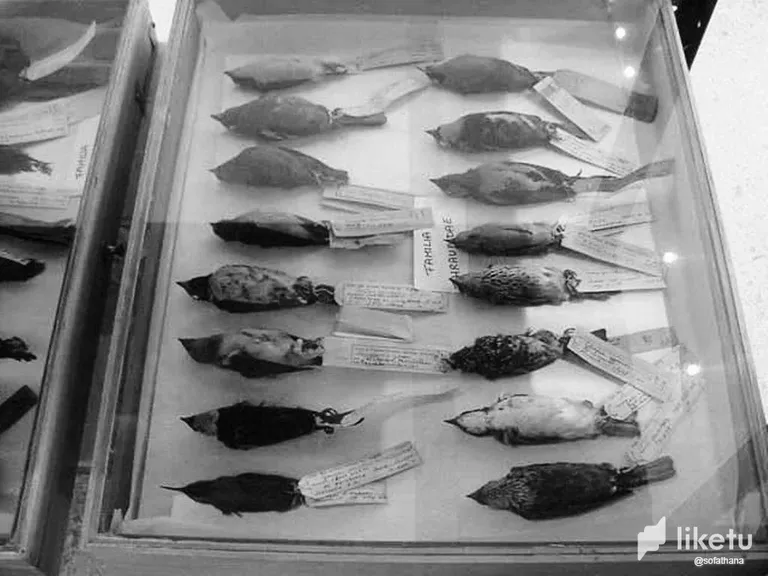
Within the enormous collection that the Museum of Sciences of Caracas has, with around 140,000 pieces (paleontology, archaeology, ethnography, mineralogy, herpetology, among others), there are some emblematic specimens such as the Saber-toothed Tiger, a fossil that the institution acquired in 1940. This feline whose scientific name is Smilodon californicus, was found in California (USA), a region where it lived 1.6 million years ago in the Cenozoic Era. It is estimated that it became extinct about 10,000 years ago.
Dentro de la enorme colección que posee el Museo de Ciencias de Caracas, con alrededor de 140.000 piezas (paleontología, arqueología, etnografía, mineralogía, herpetología, entre otras), se encuentran algunos ejemplares emblemáticos como el Tigre Dientes de Sable, un fósil que la institución adquirió en 1940. Este felino cuyo nombre científico es Smilodon californicus, fue hallado en California (EEUU), región donde habitaba hace 1,6 millones de años en la Era Cenozoica. Se calcula que se extinguió hace unos 10.000 años.
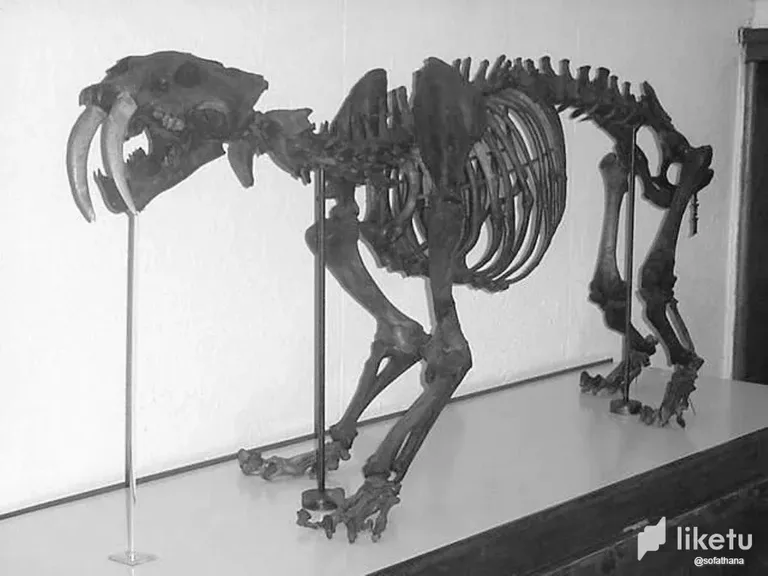
Another of the fossils that have been exhibited in the museum and that impacts visitors is the skull of a giant alligator, Purussaurus mirandai, found in Urumaco, Falcón state. This reptile could measure about 9 meters long, imagine that! It lived in what is now the Venezuelan territory about 9 million years ago.
Otro de los fósiles que han sido expuestos en el museo y que impacta a los visitantes es el cráneo de un caimán gigante, el Purussaurus mirandai, hallado en Urumaco, estado Falcón. Este reptil podía llegar a medir unos 9 metros de largo, ¡imaginen eso! Vivió en lo que hoy es el territorio venezolano hace unos 9 millones de años.
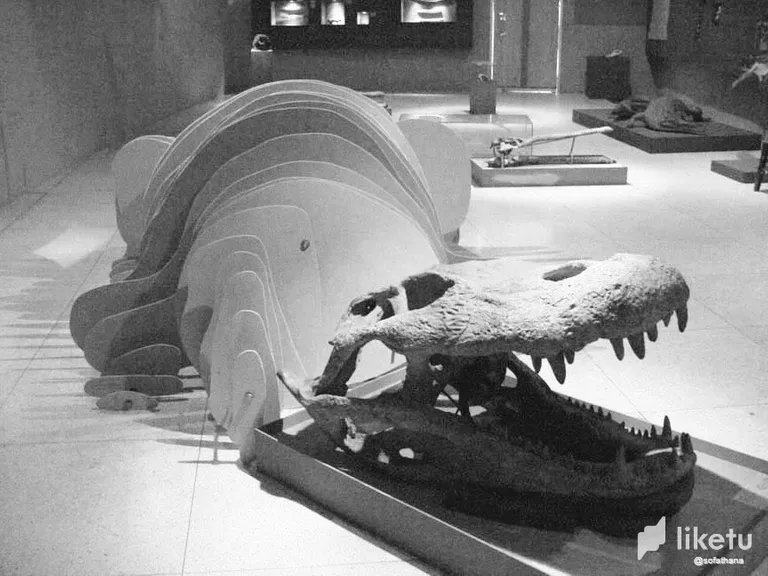
As for the taxidermized animals, the most famous in the Science Museum's collection are those belonging to the African fauna.
En cuanto a los animales taxidermizados, los más célebres que habitan la colección del Museo de Ciencias son los pertenecientes a la fauna africana.
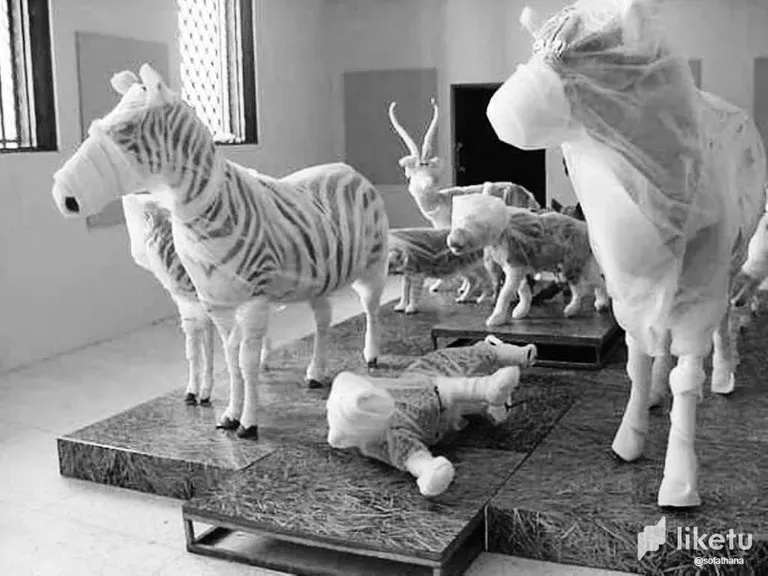
These representatives of the wild life of the African continent were hunted in 1950 during a safari in Kenya, by a Venezuelan, Armando Planchart, and some friends. Unfortunately at that time this was a common practice among wealthy people.
Estos representantes de la vida salvaje del continente africano fueron cazados en 1950 durante un safari en Kenia, por un venezolano, Armando Planchart, y unos amigos. Lamentablemente en aquella época esta era una práctica común entre personas adineradas.

The skins of these animals were treated by a taxidermist in Nairobi (Kenya's capital) and then transferred to New York, USA, where the specialist Louis Paul Jonas took care of them in his workshop and gave them the look they still have today.
Las pieles de estos animales fueron tratadas por un taxidermista en Nairobi (capital de Kenia) y luego trasladadas a Nueva York, EEUU, donde el especialista Louis Paul Jonas se encargó de ellos en su taller y les dio el aspecto que aún conservan hoy en día.
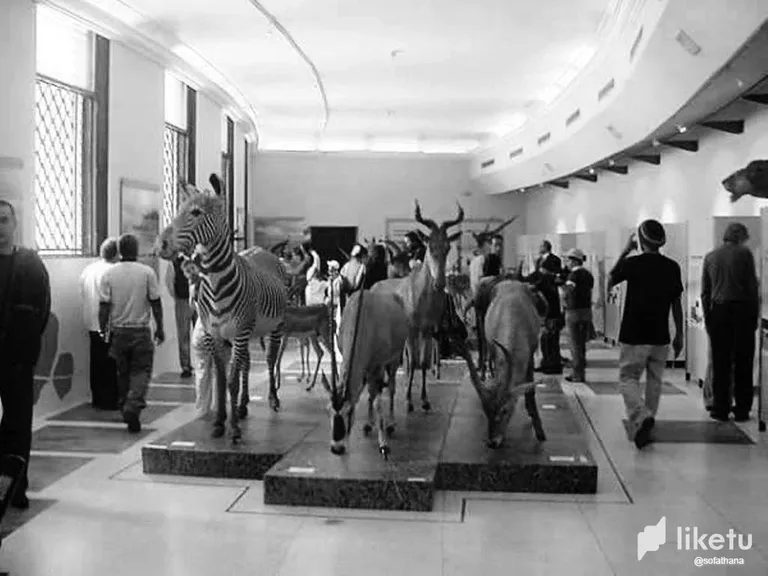
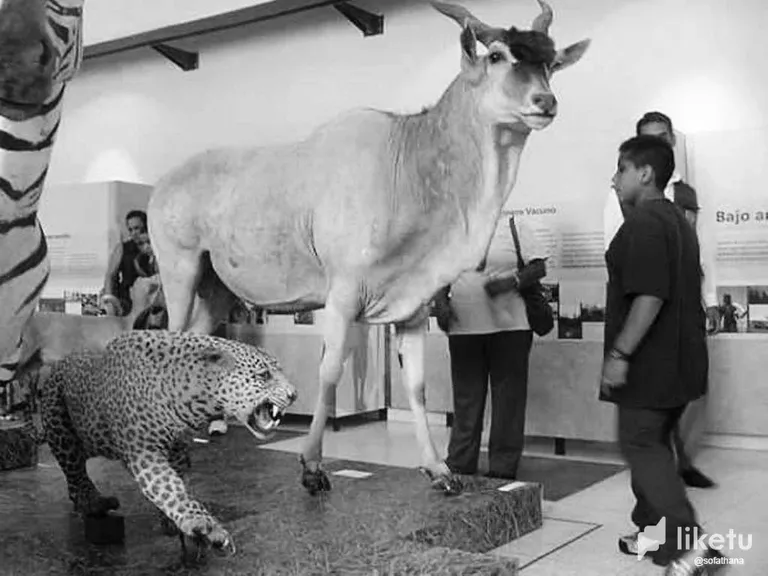
That same year Planchart donated to the Caracas Science Museum 47 specimens of different animals, with their entire bodies to be used for educational purposes, and kept some taxidermied heads for his home.
Planchart donó ese mismo año al Museo de Ciencias de Caracas 47 ejemplares de diferentes animales, con el cuerpo completo para que se usaran con fines didácticos, y conservó para su casa algunas cabezas taxidermizadas.
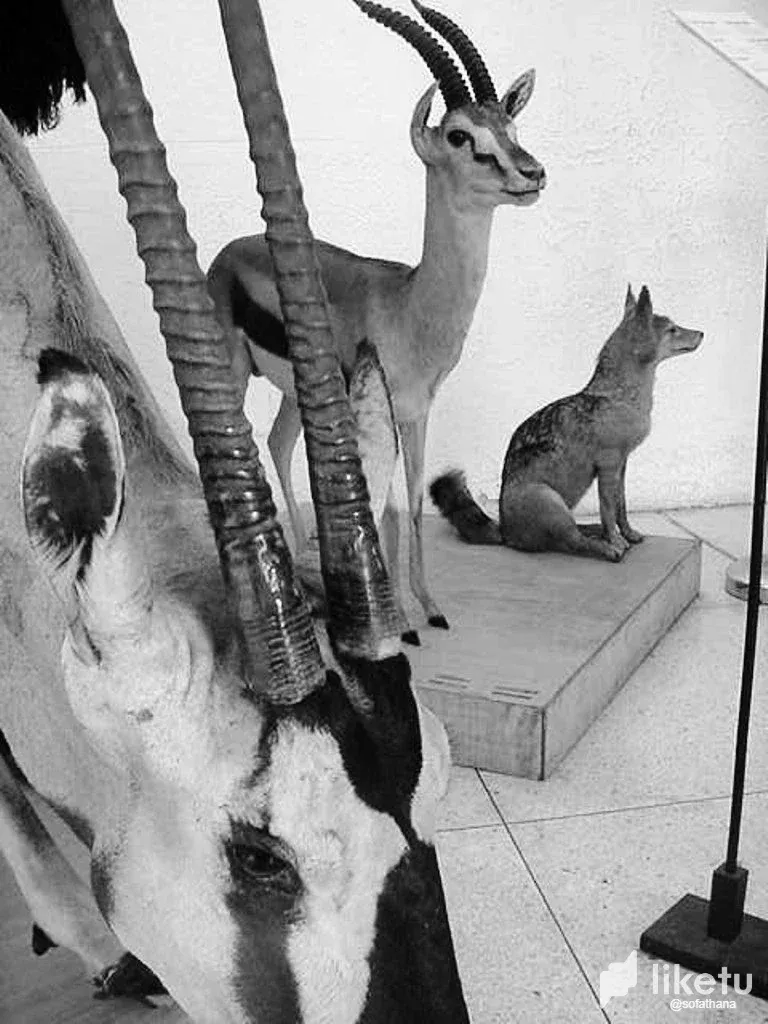
The following year, in 1951, the African Fauna Diorama was inaugurated at the museum, which at that time was the largest in the American continent and the one that concentrated the most African animals in the world, among them: hyena, leopard, lion, ostrich, impala, Steenbok, zebra, wildebeest, oryx, cheetah, jackal, giraffe, among others. This exhibit was very successful, people were able to see up close what these animals look like, most had only seen them in books, magazines or on television.
Al año siguiente, en 1951, se inauguró en el museo el Diorama de Fauna Africana, que para ese entonces fue el más grande del continente americano y el que concentraba más animales africanos del mundo, entre ellos: hiena, leopardo, león, avestruz, impala, Steenbok, cebra, ñu, oryx, guepardo, chacal, jirafa, entre otros. Esta exposición fue muy exitosa, la gente podía ver de cerca cómo se ven estos animales, la mayoría sólo los había visto en libros, revistas o la televisión.

The expression of all these animals is very lively... It is sad that they have been hunted by the fashions of the time and to be exhibited in the living room of a house. In the neck of the giraffe that you see in the photos is the bullet wound, it's shocking!
La expresión de todos estos animales es muy vivaz… Da tristeza que hayan sido cazados por modas de la época y para ser exhibidos en la sala de una casa. En el cuello de la jirafa que ven en las fotos está la herida de la bala, ¡es impactante!
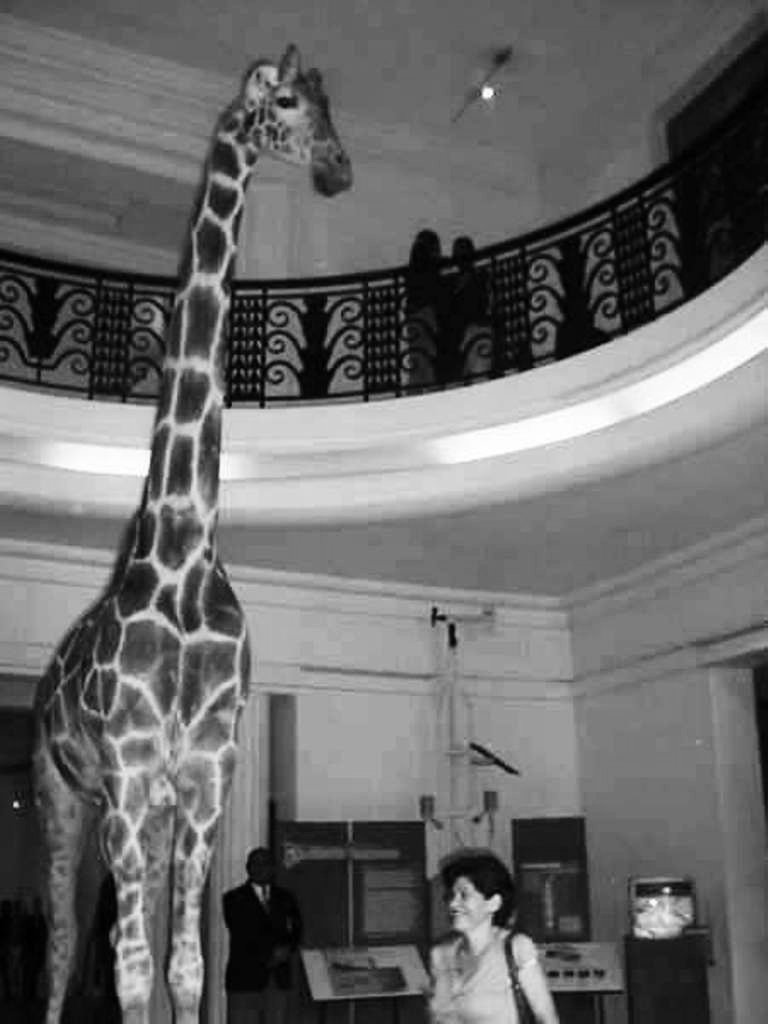
In the exhibitions that involve these specimens, carried out by the Science Museum in recent years, the message that has been transmitted to the public is one of environmental awareness, not that vision of the middle of the last century in which these living beings were simply a trophy.
En las exposiciones que involucran estos ejemplares, realizadas por el Museo de Ciencias los últimos años, el mensaje que se ha transmitido al público es de conciencia ambiental, no aquella visión de mediados del siglo pasado en la que estos seres vivos eran simplemente un trofeo.
Currently, safaris still exist in Africa, but luckily they are only photographic, I hope you have found these images from my work archives interesting.
Actualmente siguen existiendo los safaris en África, pero por suerte son sólo fotográficos, espero les hayan parecido interesantes estas imágenes de mis archivos laborales.
All photos are my property / Todas las fotos son de mi propiedad
For the best experience view this post on Liketu
#posh
https://twitter.com/sof_athana/status/1659191488918564864
En lo personal me impactó grandemente tener esa jirafa frente a mi, con su impresionante altura y belleza y luego ver esa bala que acabó con su vida por simple capricho de alguien que prefería tenerla como trofeo en su casa 😔
Por lo menos estos animales quedarán como un triste pero necesario mal recuerdo de una de las prácticas que llevó a varios de ellos a la extinción y de como el ser humano industrializado, muy a diferencia de los nativos de todo el mundo, nunca ha sabido convivir con la naturaleza ☹️😡
Totalmente de acuerdo, estos animales son un recordatorio de la estupidez del ser humano, que masacra la naturaleza sin tener en cuenta que también pertenece a ella y con sus actos se perjudica a sí mismo.